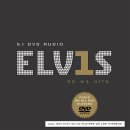In spite of the general perception of hard times in consumer electronics sales, with store closures and weak revenue reports aplenty, perhaps this is an encouraging sign of health in the industry.
Onkyo Corporation has gone public and begun selling shares on Japan’s Over-The-Counter exchange.
The Onkyo brand is well known to audio enthusiasts. Onkyo has been making audio and video components for more than 50 years, and more recently the company has established itself as a leading manufacturer of home theater components and systems. Onkyo is also taking leadership in the emerging home entertainment networking niche, with its Net-Tune technology and products.
Onkyo can boast of a worldwide manufacturing and marketing structure with more than twenty facilities including production plants, development centers and sales subsidiaries.
In announcing the stock offering, Onkyo CEO Mr. Naoto Otsuki states:
“Onkyo Corporation has gained the approval of the Securities and Exchange Commission of Japan for an Initial Public Offering (IPO) of Over-The-Counter (OTC) issues (stock code 6729) to be listed on the 25th of February 2003 on the Japan Securities Dealers Association (JASDAQ) market. This has been achieved through the continued support and patronage that all of you have brought us.”
“As a leading producer, we have continuously refined analog and state-of-the-art digital technology through the development of unique components. Now, the trend is ‘pictures and sound,’ that is to say a continuing age of enjoyable ‘sight and sound’ as a whole.”
“Onkyo has unveiled a new company logo, which features ‘Imaginative Sight & Sound,’ a concept meaning superior visual management and sound reproduction technology. The foundation of which has made Onkyo a leader in home theater and positioned on the cutting edge of home network technology.”
“This company will continue to keep a high brand image brought about through refined analog and state-of-the-art digital technology and a rigid adherence to bringing you the most reliable products today. This will undoubtedly continue to enhance our corporate value in the marketplace.”

 The music industry may have fallen on tough times, but you wouldn’t know it if all you had to go by was Joe Chiccarelli’s weekly planner.
The music industry may have fallen on tough times, but you wouldn’t know it if all you had to go by was Joe Chiccarelli’s weekly planner.

 He’s also comfortable sitting in a businessman’s chair. Up until recently, Bendeth was senior vice president of A&R for RCA Records. He recently produced and engineered Bruce Hornsby’s new album, “Big Swing Face.”
He’s also comfortable sitting in a businessman’s chair. Up until recently, Bendeth was senior vice president of A&R for RCA Records. He recently produced and engineered Bruce Hornsby’s new album, “Big Swing Face.” “We had to have just about every recording platform you could think of in the studio, along with the original recordings. We even had to borrow an old RCA three-track tape machine from a museum to make the transfers! Fortunately, Elvis was an RCA artist, and this project was released on that label, so we were able to get our hands on the original masters, which was a big help. Believe me, when they arrived at the studio people were lining up to get a look at them!”
“We had to have just about every recording platform you could think of in the studio, along with the original recordings. We even had to borrow an old RCA three-track tape machine from a museum to make the transfers! Fortunately, Elvis was an RCA artist, and this project was released on that label, so we were able to get our hands on the original masters, which was a big help. Believe me, when they arrived at the studio people were lining up to get a look at them!”